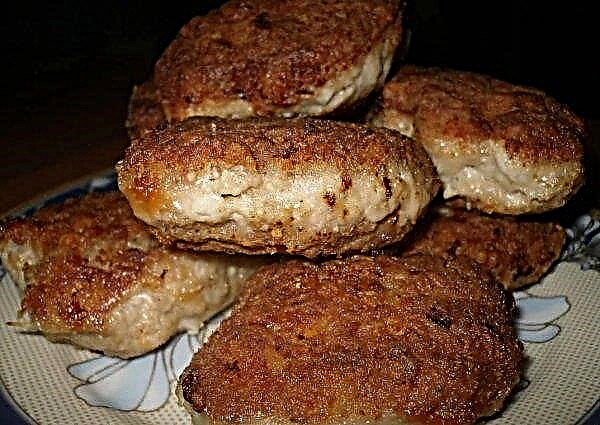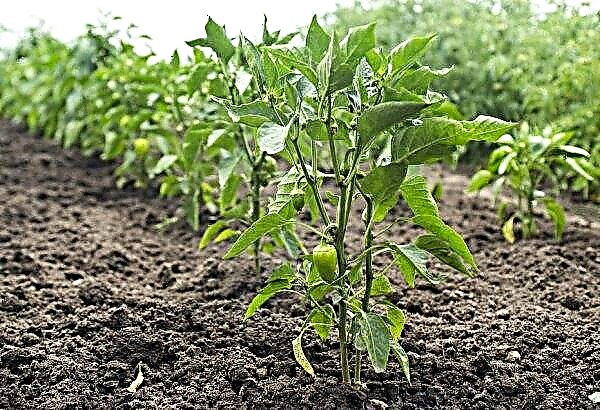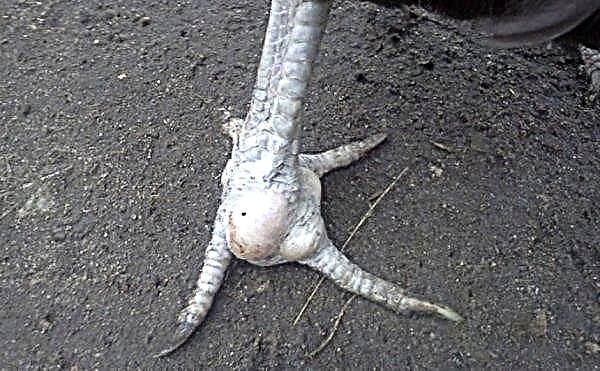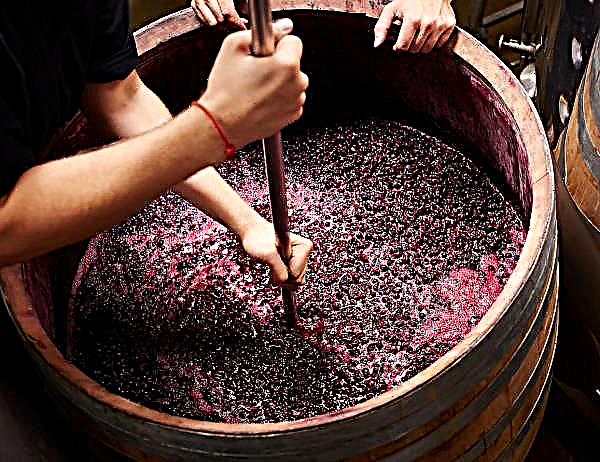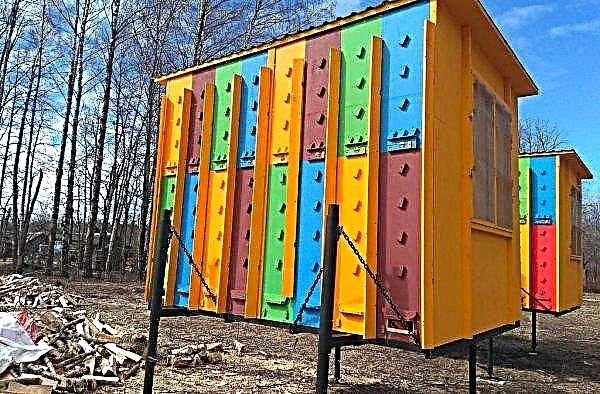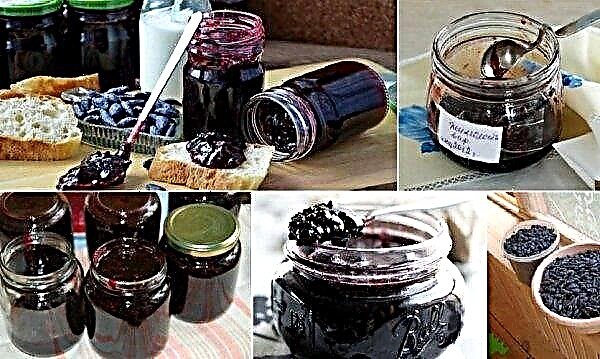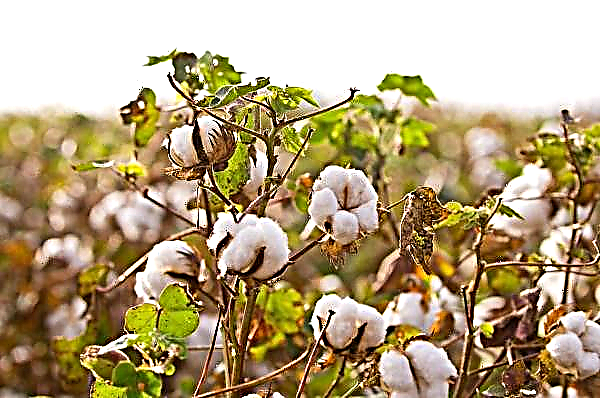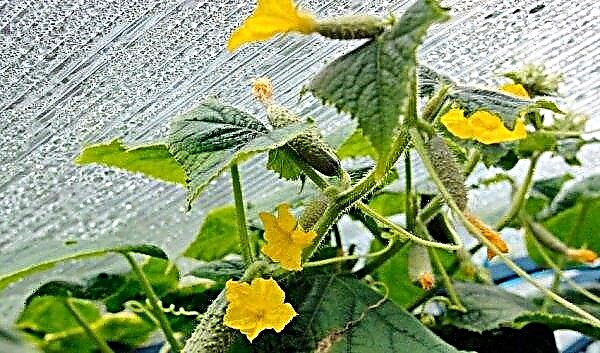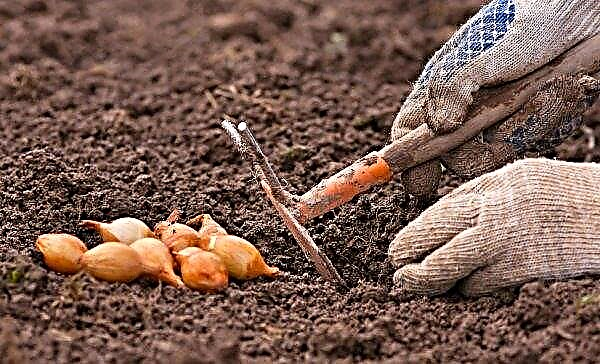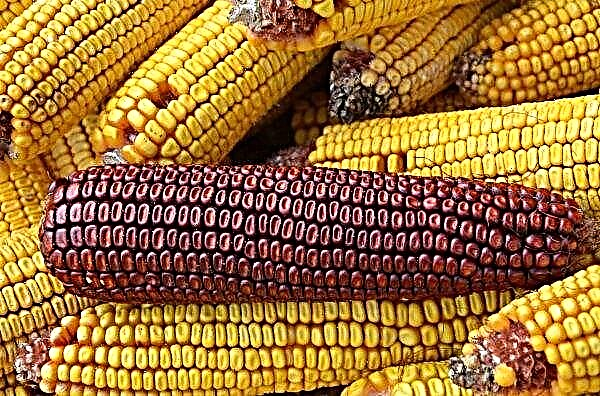Thuja is an unpretentious plant that does not require excessive care. All varieties of culture are resistant to pests and infections, yet, occasionally, they are attacked by coccid insects. About how to determine the scabbard on the thuja, what methods to protect the plant from and prevent its appearance, later in the article.
Definition of “scale shield” and “false scale shield”
These small insects parasitize on thuja, they are phytophages. False shield and scale insects are related families. They belong to the squad - half-winged. They belong to the group of families - coccides (coccoidea).
2.4 thousand species of scale insects are known in the world. Adult females are covered from above with more convex rounded wax shields that do not fuse with her body. If you open the shell, then the insect remains attached to the thuja. The diameter of the scutes is 1–1.5 mm; the color of the shell is pale yellow. Females are completely motionless, their life expectancy is several months.Did you know? In France the year before last, the thuja was called the "tree of life", it was bred in royal parks and gardens. The needles and bark of this plant, in boiled form, were used in the treatment of pulmonary diseases, stopping bleeding and as a sedative. Perfumers made essential oils from thuja needles.
Female individuals are similar to larvae:
- they have no eyes, antennas and limbs;
- only genitals are developed.
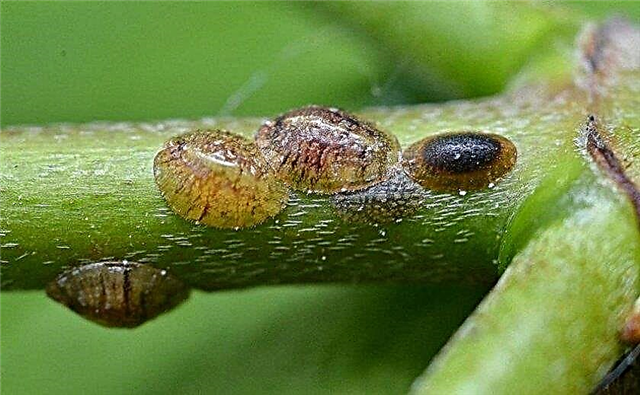
Males have:
- one pair of wings;
- flat slightly elongated shields;
- normally developed limbs;
- simplified oral organs.

Yellow-orange larvae emerge from eggs laid by female scale insects. At the first stage of development, they actively move, settling along the thuja. During this period, they cannot be distinguished by gender. Male and female individuals differ in the number of stages of development: males have five, and females have three. Larvae, having chosen a suitable place, are attached to the thuja to feed. Females become immobile after some time. Then they molt and become covered with a wax carapace of discarded skins. Over the course of the year, one generation of insects appears.
Did you know? Under adverse conditions, coccids change the composition of the population. Males emerge from the eggs in the vast majority to fly to a more suitable habitat.
As for false shields, they do not have a wax shell, they are covered with a convex dark layer of skin that warms the eggs during the death of the female. The family of false shields includes more than 1.1 thousand species that inhabit almost all continents. They do not live only in areas with extremely cold climates.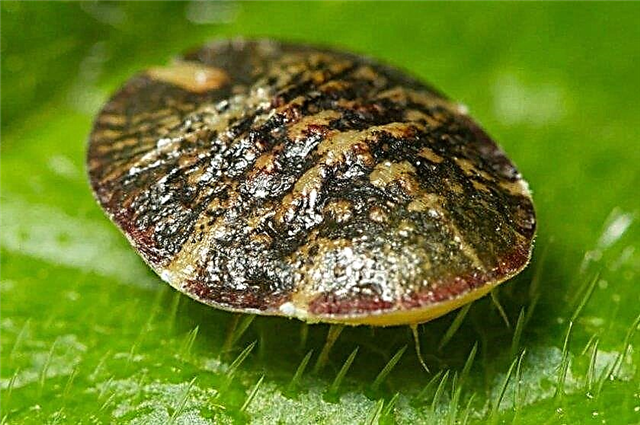
Thuja false shield (Parthenolecanium fletcheri) is a relatively large insect with a diameter of up to 3.5 mm. She has a strongly convex body, in the form of a ball, yellow-brown in color, motionless, intended for the reproduction of offspring. Egg laying lasts several days in April and half of May. Females attach to all parts of the plant, with the exception of the roots.
The male is of tiny size - up to 2 mm, his body is elongated, dissected into the head, chest and abdomen, he has one pair of wings, fully developed limbs, antennae, and no oral apparatus. The life span of a male individual is several hours, an insect spends it, moving and flying fast.
Brown larvae begin to appear in mid-June. They eat intensely throughout the week, then diapause sets in. From mid-August, the development of larvae resumes; at this stage, young individuals molt. To winter, they hide in cracks and crevices of the bark, and in spring, when the temperature reaches + 8 ° C, they are activated and move to thuja growths.Did you know? Pseudoscutis populations can breed asexually. This mechanism has not been elucidated or studied by researchers so far.
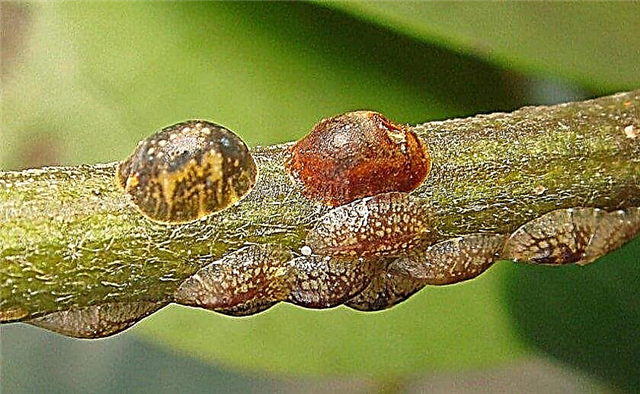 In April, female larvae become immobile and extremely voracious, at which time they build up a layer of skin that will protect the offspring in the future. Having laid eggs, the female dies. The appearance of larvae will occur on the 25-26th day.
In April, female larvae become immobile and extremely voracious, at which time they build up a layer of skin that will protect the offspring in the future. Having laid eggs, the female dies. The appearance of larvae will occur on the 25-26th day.
How to recognize the presence of scale insects
Signs of coccidia on thuja are:
- brown color of needles;
- premature collapse.
Recognize the presence of a false shield on a thuja on a brown adhesive coating on the needles and branches. It arises as a result of the discharge of females that have the consistency of a sweet mass. On the plaque, a saprophytic fungus - Apiosporium piniphilum develops, and stains the sticky substance in black.
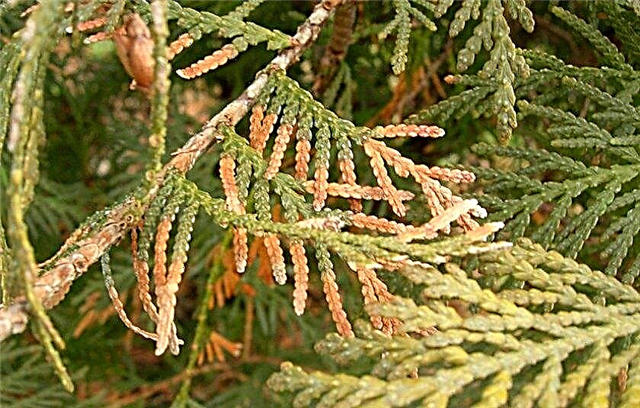
Females and larvae of coccid suck juices from needles, branches, young growths, bark, immature green cones. Yellow-brown spots appear on the damaged areas, then these parts of the plant die off. Damaged shoots are clearly visible, they are characterized by a slight increase. As a result of the vital activity of a large number of coccids, the bark begins to die and the growth of thuja slows down.
The formation of brown rounded scales, which are difficult to separate, indicates the presence of adult scale insects. The appearance of coccidic plaques is immediately difficult to notice, and when there are already a lot of them, it becomes more difficult to fight. Large accumulations of insects can be confused with growths on the trunk. Thuja seedlings are the most vulnerable, so they often die.

Methods of struggle
It is not easy to destroy coccidus, because it is difficult to detect them under the needles, and the guards are covered with a durable carapace, which is poorly distinguishable, and protects insects from the harmful effects of chemicals.
The pest eradication process includes the following activities:
- At the initial stage, gardeners remove and burn the affected branches.
- Before planting young plants, they are carefully examined.
- Trees and bushes are planted at such a distance from one another so that they do not touch.
- The trunk and skeletal branches are cleaned of dead bark.
- A massive defeat of coccids involves the uprooting of trees and their burning.
The period of the highest susceptibility of coccids to insecticides is very short and should not be missed. This is the time when the shells of underdeveloped females are still thin, transparent, soft, and therefore the drug can easily be absorbed and affect the body of insects. A highly compacted skin layer is an obstacle to the penetration of the drug, which acts in contact.Important! Given the specifics of coccidia development, it is necessary to process immature females in a period that should last from late April to the end of the first decade of May.
Video: false shield on thuja
If you prefer to use environmental methods of controlling insect pests, then you can use the help of ladybirds and wasp parasites (riders, glitter) in the garden. To do this, they need to be attracted to their plants, and they will lay their eggs under the compacted covers of coccid. Also, from July to August, all branches populated by the larvae of scale insects should be cut and burned.
Physical withdrawal
If the plants are low, and the number of insect pests is small, then they are collected by hand or with a wet sponge. Woody shoots can be scraped off with the non-sharp side of the knife. Highly affected thuja should be poured with a powerful stream of water from a hose to wash off the larvae and females.
Prepare the mixture, for this take:
- liquid soap: 15 ml;
- denatured alcohol: 10 ml;
- warm water: 1 l.
 The finished liquid must not be sprayed, but applied with a brush on the covers of insects. If these measures do not help to eradicate coccid, then use modern insecticides, as well as reliable herbal infusions.
The finished liquid must not be sprayed, but applied with a brush on the covers of insects. If these measures do not help to eradicate coccid, then use modern insecticides, as well as reliable herbal infusions.
Chemicals
The neutralization of insects is carried out using two methods. The first consists in spraying the crown, the second - in the root application of water diluted with water.
The needles are treated in the morning or evening, when there is no rain, with the help of such chemicals:
- "Angio" is diluted in the amount of 3.6 ml per 10 l of water. For a height of 2-3 m, you will need 3-5 liters of the finished solution.
- "Proteus" should be taken 6 ml and diluted in 10 liters of water. Approximately 3 L of liquid is required to spray a tree 1 m high.
Did you know? Thuja from ancient Greek is translated as “incense”. On holidays in ancient Rome and Greece, they burned the bark of this tree to appease the gods.
These substances are highly effective in the process of combating coccids because of their complex two-component composition, which has a contact-systemic effect.
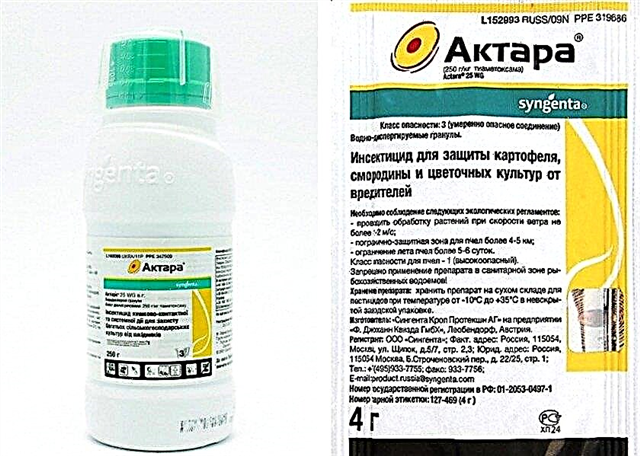 Insecticide "Aktar" should be applied under the root of the thuja, after diluting 1.4 g of the drug with 0.5 l of water, get a 0.28% solution. Under a bush with a height of 1–1.5 m, 1-2 liters of finished liquid are used.
Insecticide "Aktar" should be applied under the root of the thuja, after diluting 1.4 g of the drug with 0.5 l of water, get a 0.28% solution. Under a bush with a height of 1–1.5 m, 1-2 liters of finished liquid are used.
The systemic drug "Aktara" rises from the root up the tracheids of the xylem of the stem and reaches the branches with needles where coccids are attached. It is effective to use basal application if the arborvitae are low with a dense crown, i.e. when spraying the drug may not get on the internal branches. The action of "Actara" is gradual, in the final result it reaches young growth. Coccids die within two weeks after application. This method is more expensive compared to spraying, but it gives positive results. The period of action of the substance when applied under the root is long.
A strong defeat in coccids involves the use of organophosphorus preparations:
- Highly toxic “Actellica” or “Fosbetsida” use 1 ml, diluting in 1 liter of water. The working mixture should be sprayed with the appearance of pests. 10 m² consumes up to 2 liters of mortar.
- Insectoacaricide "Karbofos", which is referred to as organophosphorus compounds, must be taken 90 g and diluted in 10 l of water. Spray bushes and trees of thuja with a solution should be twice.
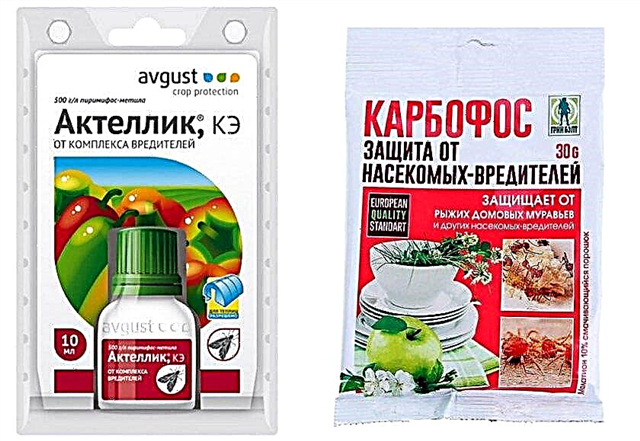
Contact-intestinal agents are also effective:
- Prepare a solution using biological insectoacaricide - Fitoverm. To do this, dilute 4 g of the substance in 1 liter of water.
- The mixture with the Bankol nicotinoid is also effective. To make it, pour 7 g of the drug into 10 liters of water, then spray the thawed liquid.
Thuja false shields are destroyed by the Fufanon insecticide. To prepare the liquid, dilute 10 ml of the product in 10 l of water. For 10 m² use 1.5 liters of the finished solution. They process the thawing "Fufanon" twice: in May – June and August in the presence of many pests.Important! The dosage of pesticides indicated in the instructions for use should be observed. Due to the toxicity of the preparations, be careful and use special clothing for personal protection.
Folk remedies
Spraying with an oily emulsion contributes to:
- the formation of a film that prevents air from reaching the guards;
- coccid poisoning when flowing under a shell.
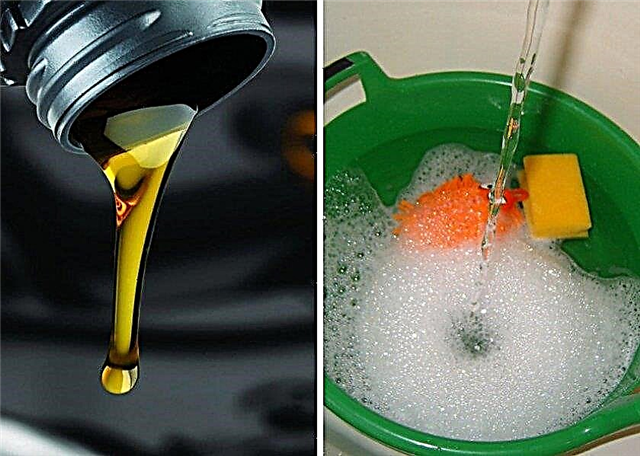 In order to prepare it, combine machine oil with soapy water in a ratio of 1 to 10. Treat three times during the month.
In order to prepare it, combine machine oil with soapy water in a ratio of 1 to 10. Treat three times during the month.
Scabies on thuja bushes can be sprayed with plant infusions.
For their preparation use:
- bow;
- garlic;
- pepper;
- fern;
- tobacco;
- celandine;
- Walnut.
Some recipes:
- Garlic or onion infusion is washed with needles, and you can also lubricate the branches with a soft brush. To do this, chop 5 cloves of garlic or chop one small onion in a mortar, pour a glass of water and stand, covering with a lid, in a dark place for several hours. To spray with infusion, it should be filtered using three layers of gauze.
- Fresh hot pepper in an amount of 50 g should be chopped and boiled in 0.5 l of water. Then insist for 24 hours, and filter. The mixture is well stored in a closed glass container in the refrigerator, so it is procured for future use. For spraying thuja, 10 g of infusion, 5 g of laundry soap and 1 liter of water should be mixed.
- To destroy young larvae, use the following mixture. To prepare it, take a 1% concentrate of needles, combine it with a 0.5% solution of laundry soap, and 0.2% brine.
Video: an easy way to deal with scale insects
Disease and Pest Prevention
Koktsid brought into the garden when buying infected planting material. During the acquisition of young seedlings or cuttings for vaccination, it is worth examining them carefully. Larvae are also carried by birds.
To ensure a healthy state of thuja help:
- systematic examination of the appearance of plants;
- compliance with timely agricultural measures, for example, mandatory sanitary pruning;
- thinning of the crown;
- cleansing the trunk and skeletal branches of damaged bark.
Important! To make it easier to spray thuja affected by pests, plant bushes at a distance of 0.8 m.
In order to prevent possible diseases of arborvitae and increase resistance, the plant is sprayed in spring with HOM. To prepare the working fluid, it is necessary to dilute 40 g of the drug in 10 liters of water. HOM is often replaced with a universal Bordeaux mixture. Thuja trees and bushes are sprayed with liquid in the spring, during the active growth of young needles. For 100 m² use 10 l of solution.
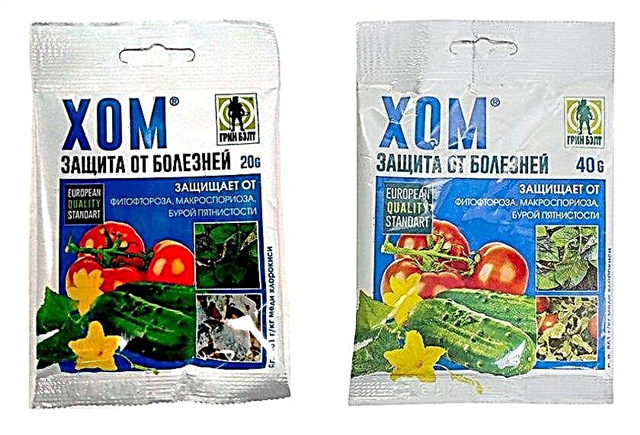
Coccids cause great harm to thuja, eating juices from plant tissues. They are voracious and prolific, provoke the death of a bush or tree. The treatment period must be selected, taking into account the developmental stages of female insects. The best time for this, when the females are still immature, is the end of April - the beginning of May. It is in vain to take measures against false shields and scale shields in June, i.e. during this period the dead integument of female individuals cover their eggs and are invulnerable.
You can eliminate coccid by the following methods:
- physical removal of insects;
- spraying needles with chemicals and folk remedies;
- radical introduction of the Aktara substance.
Spray at least twice with an interval of 10-14 days, while the preparations should be changed so that there is no habituation effect in coccids. Pests seen in time on a tree or bush will quickly prevent the spread of insects to other arborvitae.

